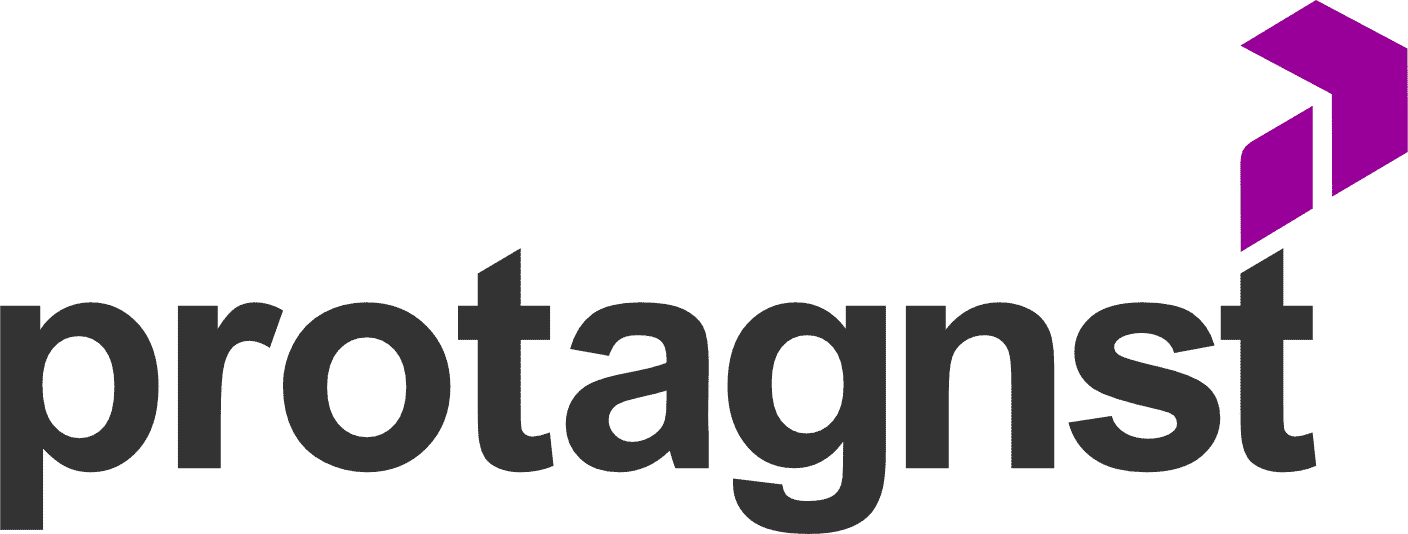When it comes to sales, asking the right questions can be the difference-maker you’re looking for to achieve extraordinary results. The ability to deeply understand your customer isn’t just a matter of courtesy, it’s a fundamental strategy for aligning the solution with their real needs. In fact, 69% of customers report greater satisfaction when they feel heard, according to research. So, how can we transform this art into a powerful sales tool?
Mapa do Conteúdo:
ToggleThe Impact of Questions on Sales Communication
Throughout the sales process, each interaction offers a valuable opportunity to dive into your customer’s world. But for this to happen effectively, you need to go beyond simply “asking to sell.” It’s about asking questions that not only collect data, but also create connection and trust.
For example, a question like “What challenges is your company facing today?” opens up space for the customer to share deeper information, beyond just numbers or superficial characteristics. This creates a solid foundation for a more fluid and constructive dialogue. And, in this scenario, active listening plays a crucial role.
Active Listening: A Competitive Edge
Knowing how to listen is an art that can change the course of a negotiation. Demonstrating to the customer that you’re not just waiting for your turn to talk, but you’re actually absorbing what they’re saying, creates an atmosphere of trust and respect. Questions followed by answers that are taken seriously elevate the customer’s perception of your approach, as if each interaction was unique and tailored.
In a sales environment, questions like “What business problem are you trying to solve?” are powerful because they make the customer think and share details that might not have come up in a regular conversation. This is the kind of interaction that can transform a generic approach into a personalized and successful sale.
Questions That Make the Difference in Sales

As we delve deeper into building an effective sales process, we realize that questions play a central role. They don’t just help you understand the customer, but they guide the flow of the negotiation, leading you to a suitable solution and, of course, to closing the sale. When you master the art of asking questions, you can turn casual conversations into business opportunities.
1. Open-Ended Questions to Gather Relevant Information
Open-ended questions are powerful because they allow the customer to share information beyond the basics, revealing their motivations, concerns, and expectations. Instead of questions that can be answered with “yes” or “no,” like “Do you need a new management system?”, you can use richer approaches like:
- “What are the main challenges you’re facing in your operation today?” This question goes beyond a simple confirmation of interest. It encourages the customer to reflect and detail the real problems they face, offering information that will be essential to shaping your proposal.
- “What would you like to see different in your current solution?” This way, you understand not only what the customer is unhappy with, but also identify areas where you can add value concretely.
These questions open up space for the customer to share not only facts, but also their feelings and expectations, which enriches the conversation and strengthens the relationship.
2. Closed-Ended Questions to Guide the Decision Process
On the other hand, closed-ended questions, which ask for direct answers, have their strategic place in negotiation. They’re ideal when you need to confirm specific information or when you want to guide the customer to a concrete decision.
- “Would you be ready to implement this solution in up to 30 days?” Here, you’re directing the customer towards closing, without rushing, but with a focus on the next step. This question also helps to identify any potential obstacles that may still exist in the process.
- “If I can address your concerns about price, can we move forward with the purchase?” This is an effective way to get around objections and bring the customer to a decision position. It shows that you’re willing to solve problems and that you value their needs.
3. Thought-Provoking Questions to Generate Engagement
Thought-provoking questions work as a strategy to make the customer think more deeply about the value of your solution and the impact it will have on their business. This is especially useful in consultative sales, where the decision cycle can be longer and involves different factors.
- “How do you see your company a year from now with this solution up and running?” By provoking the visualization of the future, this question puts the customer in a more optimistic position, imagining the long-term benefits. This not only helps in the process of convincing, but also generates a sense of urgency, motivating them to consider the gains of acting quickly.
- “What results do you expect to achieve with our solution in the next six months?” Here, the customer reflects on their expectations and you get a clearer understanding of the success indicators that are important to them. This not only reinforces confidence in the solution, but also offers an opportunity to further personalize your proposal.
4. The Importance of Exploring Financial Expectations
Discussing financial matters can be a sensitive time in the negotiation, but it’s essential to ensure that expectations are aligned from the start. However, it’s important to approach the subject sensitively, without seeming intrusive or focused only on the monetary value.
- “What’s the budget you have available to solve this problem?” By asking this question directly, but respectfully, you open up space for the customer to be transparent about their financial limitations. This makes it easier to adjust your offer, ensuring that you’re both on the same page.
- “Have you already calculated the expected return on this investment?” This question engages the customer in a more strategic discussion, focused on long-term benefits and the viability of the investment, instead of focusing only on the immediate cost.
5. The Role of Questions in Closing Sales
During the final stage of a negotiation, it’s important to use questions that guide the customer to closing, without seeming to pressure them. They should serve to validate the customer’s needs and ensure that they feel confident in moving forward.
- “Is there anything else I can clarify for you to feel comfortable moving forward?” An open-ended question like this conveys that you’re concerned about ensuring that all questions are answered before making a final decision. This reduces pressure and creates an environment of trust.
- “If all your expectations are met, would you be ready to sign the contract today?” This question helps to assess the stage of decision the customer is in and creates a sense of urgency without seeming forced.
Conclusion: Turn Questions into Opportunities
The right questions have the power to transform a simple interaction into a real sales opportunity. They allow you to understand the customer’s pain points, align expectations, and above all, build a relationship of trust. Remember: the secret isn’t just in the answers you get, but in how you structure the questions. It’s through these questions that you position yourself as a consultant, someone who’s there to help, not just to sell.
By incorporating these strategies into your daily routine, you’ll be better prepared to not only close deals, but also to create lasting relationships built on trust and mutual understanding.
The Power of Qualifying Questions in Sales

When you master the art of asking questions in sales, lead qualification becomes a clearer and more directed process. Qualifying leads well from the start means you’re devoting your time and energy to the right opportunities, increasing your conversion rate and the efficiency of the sales process.
Qualifying questions are essential for identifying whether the lead really fits the ideal customer profile, whether they’re at the right time to buy, and whether they have the need and budget to invest in your solution. Let’s explore how to do this efficiently.
1. Identifying Needs and Challenges
One of the main functions of qualifying questions is to understand the customer’s real needs. The more you know about their problems, the easier it will be to show how your solution is the ideal one to solve them.
- “What are the main problems your company is facing right now?” With this question, you can understand the critical points of the customer’s business. This also offers insights into how you can help solve these problems effectively.
- “What happened that made you seek a new solution now?” Often, the customer isn’t in the buying process by chance. Something motivated them to look for your solution at this time, and understanding this trigger is fundamental to customizing your offer.
2. Understanding the Financial Impact
Discussing the financial aspect of the sale is fundamental, but it needs to be done intelligently. Your goal isn’t just to find out if the customer has the money to pay, but rather to understand the value they attribute to the solution and how they measure the return on investment.
- “How do you usually measure the success of a new investment?” This question shows that you care about the outcome the customer will have when investing in your solution. From the response, you can align your proposal with their financial expectations.
- “What budget did your company allocate to solve this problem?” Knowing the budget from the start avoids unnecessary discussions later and allows you to present viable options within what the customer is willing to invest.
3. Exploring the Decision Process
Understanding how the customer makes decisions within their company is a crucial step. This involves knowing who the decision-makers are, what factors influence these decisions, and the timeline for the purchase to be made.
- “Who else is involved in making the decision?” This question helps you understand the company’s internal dynamics and who you’ll need to influence. It also opens up space for you to adjust your speech, depending on who else is part of the process.
- “What is the ideal timeline for implementing this solution?” By understanding the customer’s timing, you can adjust your expectations and align delivery deadlines, avoiding potential frustrations later on.
4. Questions to Understand the Perceived Value
In addition to measuring the financial impact, it’s important to understand the value the customer perceives in your solution and how they compare it to alternatives they may have considered.
- “What made you consider our solution instead of others you’ve already evaluated?” Knowing why the customer chose to speak with you and not the competition gives you insights into your differentials. This also reveals possible areas where you need to reinforce the value of your offer.
- “What do you expect a new solution to solve that the previous ones couldn’t?” This question not only helps to understand the customer’s expectations, but also highlights the failures of previous solutions, allowing you to highlight the unique benefits of your product.
5. Creating Urgency and Overcoming Objections
The qualification phase is also the ideal time to start identifying objections and working on creating urgency. If the customer is hesitant, this is where you begin to disarm these concerns and prepare the ground for closing.
- “Is there anything holding you back from making this decision now?” Questions like this allow the customer to express their doubts and concerns. With this information, you can work to overcome these objections and offer the necessary guarantees so they feel confident in moving forward.
- “What’s missing so we can move forward with this project?” Asking directly what’s needed to move forward can accelerate the decision process, as well as demonstrate proactivity and a focus on closing.
Tips for Creating Effective Questions
Asking the right questions might seem simple, but it’s a skill that requires practice and refinement. Here are a few tips to make your questions even more effective:
- Be Specific: Vague questions generate vague answers. Avoid generic questions like “Are you satisfied with your current system?” and prefer something more specific, like “What challenges are you facing with your current system that you’d like to solve?”
- Adapt to the Context: Each customer is different, so avoid using a rigid script. Adapt your questions according to what the customer reveals throughout the conversation.
- Actively Listen: Once you’ve asked the question, listen carefully to the answer. Show genuine interest and follow up based on the information provided.
- Avoid Too Many Questions: Don’t bombard the customer with questions in a row. Give them space to talk and guide the conversation naturally.
- Prioritize Open-Ended Questions: Open-ended questions encourage the customer to share more details and reveal information that may not come up in closed-ended questions.
Benefits of Good Qualification
Good qualification offers clear benefits for both you and the customer. By understanding their needs more deeply, you are able to offer more precise solutions and, at the same time, increase your chances of closing the deal. Additionally, good qualification saves time, as it prevents you from investing effort in leads that have no buying potential.
Another important benefit is strengthening the relationship with the customer. By asking relevant questions and showing genuine interest, you stand out as a trusted consultant, not just another salesperson. This contributes to a positive buying experience, which increases the chances of loyalty.
Conclusion: Qualification as a Strategy to Close More Sales
At the end of the day, success in sales often depends on how well you know your customer. The more qualified questions you ask, the easier it will be to align the solution with the customer’s expectations and needs. The right questions are like a map that guides the negotiation towards closing. They reveal not only what the customer wants, but also what they need to hear to feel secure and confident in their decision.
Remember: the sale doesn’t start when you offer a product, but rather when you truly begin to understand the customer.
Question Strategies to Close Sales and Overcome Objections

In the final stretch of a negotiation, the questions you ask can be the deciding factor in closing the deal. At this stage, the customer is already familiar with your offer, but there may still be doubts or barriers that prevent them from moving forward. Therefore, it’s crucial to know how to conduct the dialogue in a way that resolves the last concerns, creates urgency, and ultimately ensures that the customer feels confident enough to make the final decision.
1. Questions that Create Commitment
To get the customer to commit to the purchase, it’s important to validate whether all their needs have been met. An effective approach is to ask questions that help identify if there’s anything the customer still needs to know to feel comfortable with the decision.
- “Is there anything else you’d like to clarify before we make the final decision?” This question conveys that you’re available to resolve any outstanding issues, without pressure. Additionally, by using “we,” you’re framing the sale as a partnership, which helps build an environment of trust.
- “If all your expectations are met, are you ready to close the deal today?” Here, you’re checking if the customer is mentally prepared to take the next step. If they respond positively, the path to closing is practically guaranteed.
2. Overcoming Objections with Targeted Questions
Objections are natural in any sales process. They can be related to price, deadlines, confidence in the product, or even uncertainties about the real need for a solution. Instead of avoiding these issues, you should embrace objections and use questions to disarm them.
- “If we could adjust this point, would you feel more comfortable moving forward?” Questions like this bring clarity about what’s actually preventing the closing. They help to direct the conversation to a specific solution and demonstrate willingness to adapt the offer if necessary.
- “What are your main concerns about this purchase?” When the customer openly expresses their concerns, you have the opportunity to address them directly, preventing these doubts from hindering the progress of the deal.
3. Questions to Get Around Price Issues
Price is one of the most common objections in sales, and can be a sensitive topic to address. However, with the right approach, you can show that the value offered justifies the investment and overcome this barrier.
- “How would you assess the cost-benefit of our solution compared to other alternatives?” This question leads the customer to consider not only the price, but also the value and benefits your solution offers compared to other options. It encourages the customer to think beyond the immediate cost and consider the positive impact in the long term.
- “If price wasn’t an issue, would you believe that this solution is the best choice for your problem?” By isolating price as the only obstacle, you can confirm that all other aspects of the offer meet the customer’s expectations. This facilitates future price negotiations, as you’ll be focusing on resolving the last outstanding point.
4. Questions to Create Urgency
Creating urgency is an important technique to help the customer realize that now is the time to act. By making them reflect on the impact of postponing the decision, you increase the chances of them committing to the purchase.
- “What would happen if you didn’t solve this problem in the next few months?” With this question, the customer will be led to reflect on the consequences of not acting quickly. It also reinforces the relevance and urgency of the solution you offer.
- “What would be the impact of implementing this solution immediately for your business?” This question makes the customer imagine the tangible and immediate benefits of your solution. This not only reinforces the value of the offer, but also creates a sense of opportunity they may not want to miss.
5. The Soft Close: Ensuring the Decision
Finally, at the time of closing, it’s important that the customer feels like they’re making the right decision, without pressure. The soft close is an approach that facilitates the transition to “yes” without forcing the sale.
- “Now that we’ve discussed all the points, how would you like to proceed?” This question is a polite and open way to guide the customer to closing. It gives the customer a sense of control, allowing them to finalize the purchase at their own pace.
- “Let’s get started on the process to implement this solution as soon as possible?” By suggesting a concrete next step, you eliminate the inertia that can occur at the end of a negotiation. This question directs the customer to take action, without being aggressive.
List of Powerful Questions to Close Sales
Below, a list of the main questions that can be used at different stages of the sale to help with closing:
- “What’s missing for us to make this decision today?” Helps to identify any remaining obstacles and address them quickly.
- “If we adjust [objection], would you be ready to close now?” Directed to get around a specific objection, encouraging closing.
- “What benefits do you see in solving this issue now?” Generates urgency and reinforces the value of the solution.
- “How will this solution help you achieve your goals in the coming months?” Focuses on future benefits, increasing confidence in the investment.
- “Are you ready to move forward or do you have any more questions?” Makes it clear that you’re available to resolve any outstanding issues, but also directs them to the final decision.
- “What else could I do to make sure we’re ready to move forward?” This question makes the customer feel that you’re willing to help with every detail, building even more trust.
Final Considerations
Questions are the most powerful tools you can use in a sale. They not only reveal valuable information about the customer, but they also guide the negotiation process, making the path to closing smoother and more natural. Knowing the right time to ask each question and, most importantly, actively listening to the responses, can transform a hesitant sale into a closed deal.
Whether during qualification, overcoming objections, or generating urgency, the right questions create a constructive dialogue and place the customer at the center of the decision. By applying these techniques, you not only increase your chances of success, but also build stronger and longer-lasting relationships with your customers.
And now, how are you going to use these strategies in your next close?




